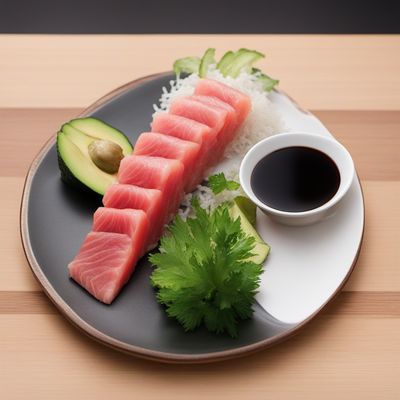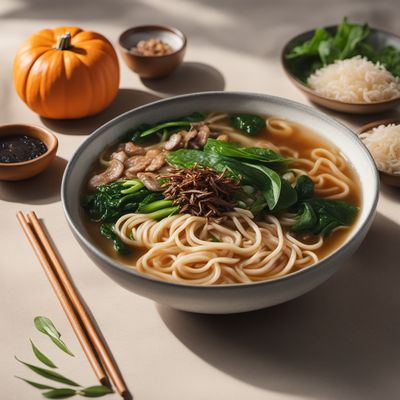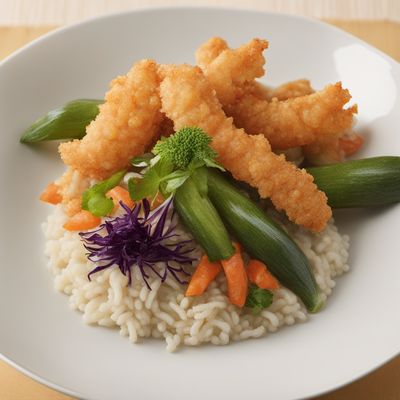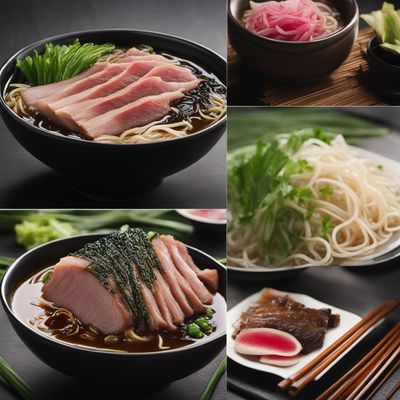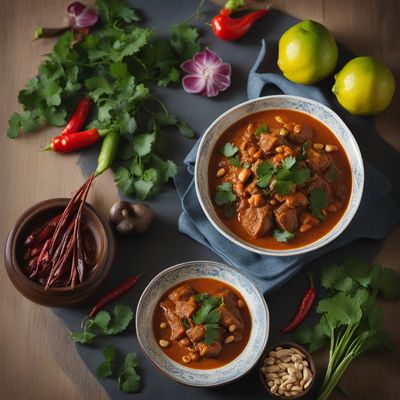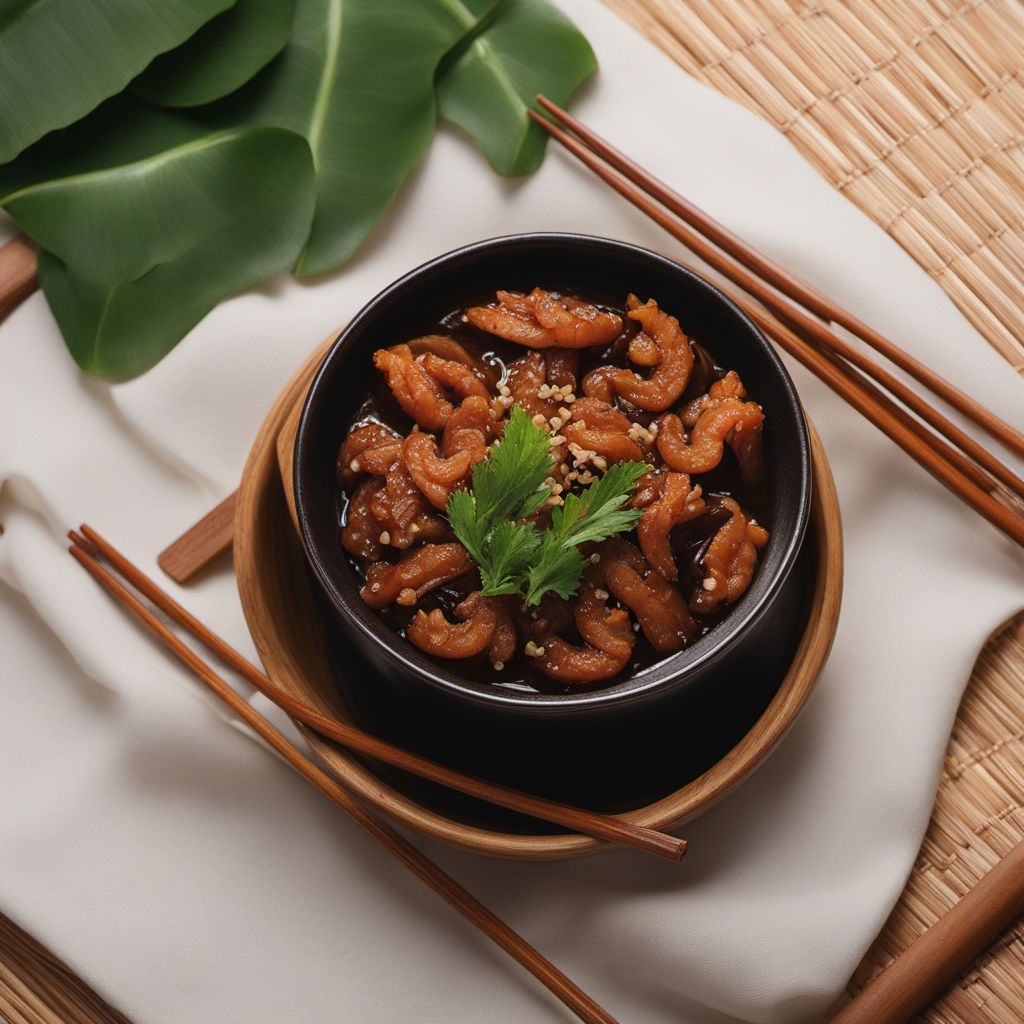
Recipe
Peranakan-style Akumaki
Nyonya-inspired Sticky Rice Dumplings
4.3 out of 5
In Peranakan cuisine, the traditional Japanese dish Akumaki gets a delightful twist. Peranakan-style Akumaki combines the flavors of Japanese sticky rice dumplings with the vibrant spices and ingredients of Peranakan cuisine.
Metadata
Preparation time
30 minutes (excluding soaking time)
Cooking time
1 hour
Total time
1 hour and 30 minutes (excluding soaking time)
Yields
4 servings
Preparation difficulty
Medium
Suitable for
Gluten-free, Dairy-free, Nut-free, Low sugar, High protein
Allergens
Shellfish (dried shrimp), Soy (soy sauce), Sesame
Not suitable for
Vegan, Vegetarian, Paleo, Keto, Low-carb
Ingredients
In the Peranakan-style Akumaki, the traditional Japanese ingredients are replaced with Peranakan flavors. The filling includes minced pork, dried shrimp, and mushrooms, which are commonly used in Peranakan cuisine. Additionally, the dumplings are wrapped in bamboo leaves instead of the traditional Japanese method of using bamboo leaves or plastic wrap. This adaptation infuses the dish with the distinct flavors and textures of Peranakan cuisine. We alse have the original recipe for Akumaki, so you can check it out.
-
2 cups (400g) glutinous rice 2 cups (400g) glutinous rice
-
1 cup (200g) minced pork 1 cup (200g) minced pork
-
1/2 cup (50g) dried shrimp, soaked and chopped 1/2 cup (50g) dried shrimp, soaked and chopped
-
1/2 cup (50g) dried mushrooms, soaked and diced 1/2 cup (50g) dried mushrooms, soaked and diced
-
2 tablespoons vegetable oil 2 tablespoons vegetable oil
-
2 tablespoons soy sauce 2 tablespoons soy sauce
-
1 tablespoon oyster sauce 1 tablespoon oyster sauce
-
1 tablespoon dark soy sauce 1 tablespoon dark soy sauce
-
1 tablespoon sesame oil 1 tablespoon sesame oil
-
1 teaspoon sugar 1 teaspoon sugar
-
1/2 teaspoon ground white pepper 1/2 teaspoon ground white pepper
-
10-12 bamboo leaves, soaked in hot water 10-12 bamboo leaves, soaked in hot water
Nutrition
- Calories (kcal / KJ): 350 kcal / 1465 KJ
- Fat (total, saturated): 12g, 3g
- Carbohydrates (total, sugars): 45g, 2g
- Protein: 15g
- Fiber: 2g
- Salt: 1.5g
Preparation
-
1.Rinse the glutinous rice under cold water until the water runs clear. Soak the rice in water for at least 4 hours or overnight.
-
2.Heat vegetable oil in a pan over medium heat. Add minced pork, dried shrimp, and dried mushrooms. Cook until the pork is browned and the ingredients are fragrant.
-
3.In a bowl, combine the cooked pork mixture with soy sauce, oyster sauce, dark soy sauce, sesame oil, sugar, and ground white pepper. Mix well.
-
4.Drain the soaked glutinous rice and mix it with the pork mixture.
-
5.Take a bamboo leaf and place a spoonful of the rice mixture in the center. Fold the leaf to form a rectangular shape, making sure the rice is fully enclosed.
-
6.Repeat the process with the remaining rice mixture and bamboo leaves.
-
7.Place the wrapped dumplings in a steamer and steam over high heat for about 1 hour or until the rice is cooked and tender.
-
8.Remove the dumplings from the steamer and let them cool slightly before serving.
Treat your ingredients with care...
- Bamboo leaves — Make sure to soak the bamboo leaves in hot water to soften them before wrapping the dumplings. This will prevent them from tearing and make them more pliable.
Tips & Tricks
- If you prefer a stronger flavor, marinate the minced pork with the soy sauce and spices for 30 minutes before cooking.
- You can add additional ingredients to the filling, such as water chestnuts or Chinese sausage, to enhance the texture and flavor.
- Serve the Peranakan-style Akumaki with a side of spicy sambal sauce for an extra kick of flavor.
Serving advice
Serve the Peranakan-style Akumaki warm as a main dish or as part of a festive meal. Garnish with sliced spring onions for a pop of color.
Presentation advice
Arrange the Peranakan-style Akumaki on a platter, unwrapping them partially to showcase the bamboo leaves. This will add an element of visual appeal to the dish.
More recipes...
For Japanese cuisine » Browse all
More Japanese cuisine dishes » Browse all
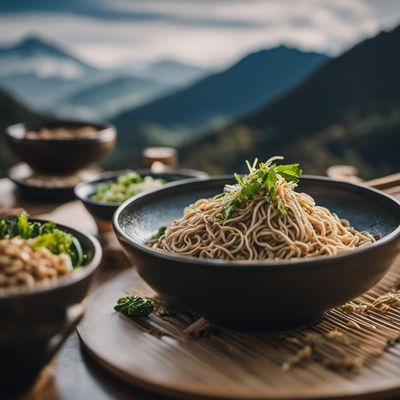
Sansai soba
Buckwheat Noodles with Mountain Vegetables
Sansai soba is a popular Japanese dish that is known for its unique combination of ingredients. It is made with soba noodles, wild mountain...

Tamago nigiri sushi
Egg Nigiri
Tamago nigiri sushi is a traditional Japanese dish that consists of a small ball of sushi rice topped with a slice of sweet omelet. The dish is...
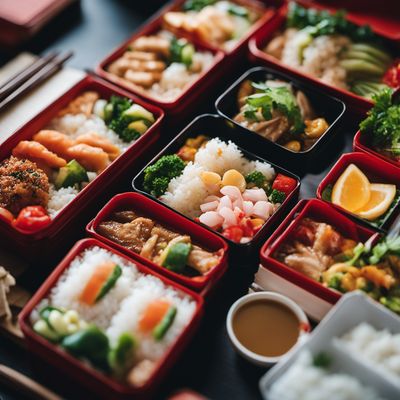
Bento
Bento is a traditional Japanese meal that consists of a single-portion meal served in a box-shaped container. It typically includes rice, fish or...
